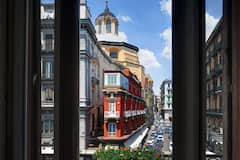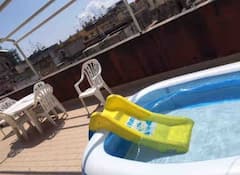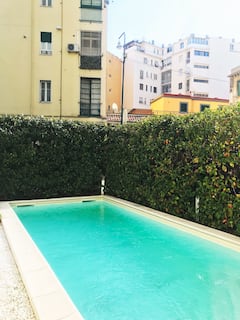On the 24th of August, 79 AD one of history’s most well documented catastrophes took place. The volcanic eruption of Mount Vesuvius, and the ash cloud which followed, engulfed the resplendent Roman City of Pompeii. This natural and historical phenomenon led to the preservation of what is now considered by most to be one of history’s greatest artefacts. As civilisations developed and the classical world began its denouement, with its settlements destroyed or modernised, Pompeii lay in wait covered and preserved by the volcanic ash which so indiscriminately killed its inhabitants - but so carefully guaranteed its place in history. Pompeii is our last remaining insight into what a Roman City must have been like, and its temples, theatres and houses are better preserved than anywhere else in the world - even Rome! Thus, if you’re interested in history, culture, or just want to see some dead bodies, Pompeii is an absolute must visit.
Check out the dead bodies

Morbid though it may seem, Pompeii’s unique collection of bodies, frozen in the positions in which they died, is a profoundly moving spectacle. It is very rare that we, as humans, are allowed an insight into that unique before-death moment, and the fact that Pompeii is able to offer this is just one of the many reasons for which it remains such a popular tourist destination. It is difficult not to spend long periods of time analysing each individual statue and simply ponder what they must have been thinking, as well as the overriding sentiment of empathy at just how helpless each individual. There are also some poses which fantastically exemplify an array of human emotions from that between a mother and child, to that of what is presumed to be two lovers, and it is in this most profound way in which Pompeii deeply captures our hearts and minds.
Visit the Private Residences of Pompeii's most esteemed proprietors

Whilst the grandeur of the city and some of its more spectacular public buildings often steal the headlines, perhaps the most interesting of the city’s buildings are those of the private houses. Not only do they give us a greater understanding of individuals, but the way in which each house is decorated also gives us an idea of the style and fashion of the contemporary inhabitants and thus again a better insight into their culture as a whole. Some of the most notable houses on display that you must look out for on your visit include The House of the Faun (pictured) and the House of the Tragic Poet. The latter offers a fantastic mosaic of a dog with the inscription ‘Cave Canem’, “Beware of the dog”, and is believed to be the earliest remaining example of this well known saying. There is also the House of Casca Longus, Longus is well known for being the first senator to strike Julius Caesar in the Emperor’s assassination. However contrary to what its name might suggest, this house did not in fact belong to Longus himself, and gets its title from the stunning marble table base stands in the centre of the building. This piece of furniture has an inscription to the former senator, however, was most likely acquired by the proprietor of this house when Longus’ possessions were sold off following his exile in 42 BC.
Don't miss the stunning Roman artwork

It is well documented that the Romans were a civilisation of both class and culture, and when it comes to artwork this is no exception. Years under the cover of ash has preserved the condition and colour of many of these stunning frescoes and the remaining detail is something to simply be marvelled at. Marvellous pieces of artwork can be found in many of Pompeii’s private buildings, in addition to intricate mosaic floorings and décor, and these give us an unparalleled insight into the culture, tastes and interior design of this unique civilisation.
You might be interested in these Airbnbs!
Have a walk around the stunning Roman theatres

Perhaps one of the most apparent and ostentatious examples of Pompeii’s affluence derives from its number of theatres. The most notable of these is its amphitheatre, which is the earliest surviving Roman amphitheatre and also the first known to be made out of stone. With an estimated capacity of 20,000, the amphitheatre is both enormous and architecturally stunning, and upon my visit it was also the place where the exhibition of the bodies was located. In addition to this, there is also a large and a small theatre which are also both great in size and beauty, and within these you have the opportunity to perch yourself upon the seats and envisage what it must have been like to see a show there over 2000 years ago.
Pompeii truly is one of the places everyone must visit at least once
Pompeii is one of the few places which I have always dreamed of going to and realising that dream by no means fell short of my high expectations. It is a historical implausibility and yet arguably the greatest treasure in the archaeological world, and it is a place which everyone must visit at least once in their life. Going to Pompeii is like travelling back in time to the classical world, and to walk exactly the same streets, visit exactly the same houses, and see some of the same people as the Romans who once lived here did is truly a magical experience.
History
Get Trip101 in your inbox
Unsubscribe in one click. See our Privacy Policy for more information on how we use your data




















Create an account to